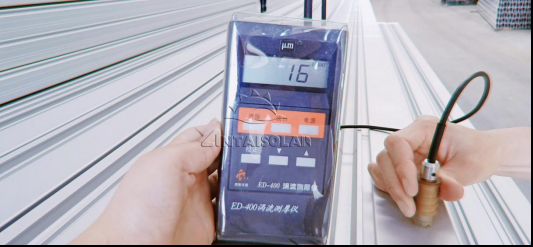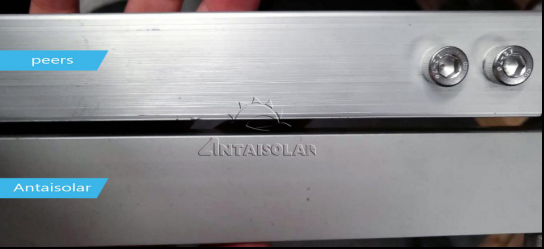最新博客
标签
How do anodization affect solar racking performance
September 02 , 2019We all know that the performance and service life of solar racking are directly related to the benefits of solar power plant. Due to long-term exposure to wind and sunlight, it’s necessary to consider the corrosion resistance and hardness of the solar racking.
In order to meet a certain standard, companies will choose different surface treatments, such as anodization, electrophoresis coating, powder coating, etc. One of the most widely used is anodization, so why does it become so popular?
The anodized aluminum profiles will forms an oxide film on the surface, which provides strong and effective corrosion protection. In addition, the anodized film has higher hardness, which greatly improves the wear resistance of aluminum profiles.
The oxide film thickness of aluminum profiles is mainly divided into 4 grades, namely AA10, AA15, AA20, AA25. That is to say, its average film thickness should be 10μm, 15μm, 20μm, 25μm, and the local thickness is not less than 8μm, 12 μm, 16 μm, 20 μm.
For general solar racking, 10μm anodization film is the most common and standard average thickness.

Antaisolar always conducts strict surface treatment control to ensure its thickness meet the standard(10μm and ever higher). Based on the concept of adhering to quality first, Antaisolar has a quality-guarantee system with excellent inspectors, thorough QC management and higher than standard processing.We have professional factory and test.

As shown in the picture above, compared with peer products, Antaisolar product surface oxidation is more dense and smooth, which also has superior corrosion resistance and wear resistance.
The concept of quality first runs through in the whole production chain of Antaisolar, Antaisolar always insists on creating value for customers and ensuring achieve customers expectations.